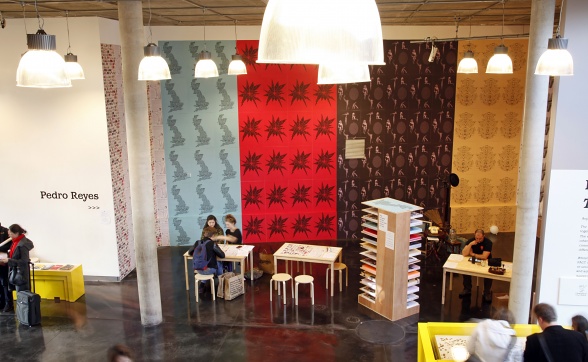Pedro Reyes

Pedro Reyes, Melodrama and Other Games, 2012. Photograph by Jerry Hardman-Jones

Pedro Reyes, Melodrama and Other Games, 2012. Photograph by Jerry Hardman-Jones

Pedro Reyes, Melodrama and Other Games, 2012. Photograph by Jerry Hardman-Jones
Pedro Reyes, Melodrama and Other Games, 2012. Photograph by Jerry Hardman-Jones
Trained as an architect, Pedro Reyes is interested in societal problem solving. His projects aim to improve the urban environment through hands-on facilitation: increasing individual and collective agency through constructed situations, which he devises.
Of prime importance is Reyes' interest in the 'encounter experience' between strangers and the de-professionalization of therapy and its use as a peer assisted tool. This has most recently been evidenced in the artist's Sanatorium, a temporary clinic in which visitors can experience treatments drawn from Gestalt psychology, theatre warm-up exercises, Fluxus events, corporate coaching and psychosis – simultaneously acknowledging the importance of the performed and ‘real’ self.
Reyes' new commission for Liverpool Biennial 2012, titled Melodrama and Other Games, uses the format of a board game as it starting point and considers the architecture of relationships in an increasingly commoditised environment. Inspired by the classic game of Snakes and Ladders, Melodrama is a board game customised to reflect the ups and downs of human relationships. Other games include Mine-field, Feather Fun, and Slow-motion Fight, which are parlour games that encourage visitors to improvise new forms of social interaction with each other.
Pedro Reyes (b. 1972, Mexico City) lives and works in Mexico City. Reyes’ solo exhibitions include Rompecabezas (LABOR Gallery, Mexico City, Mexico, 2012), Babymarx (Walker Art Gallery, Minneapolis, U.S.A.), and Sanatorium (Guggenheim Museum, New York, U.S.A and dOCUMENTA 13.).
Pedro Reyes at Liverpool Biennial 2012
Melodrama and Other Games, 2012
Mixed media installation
Commissioned by Liverpool Biennial and FACT
Exhibited at FACT
Supported by
Commissioned by Liverpool Biennial and FACT
Liverpool Biennial
55 New Bird Street
Liverpool L1 0BW
- T +44 (0)151 709 7444
- info@biennial.com
Liverpool Biennial is funded by
Founding Supporter
James Moores